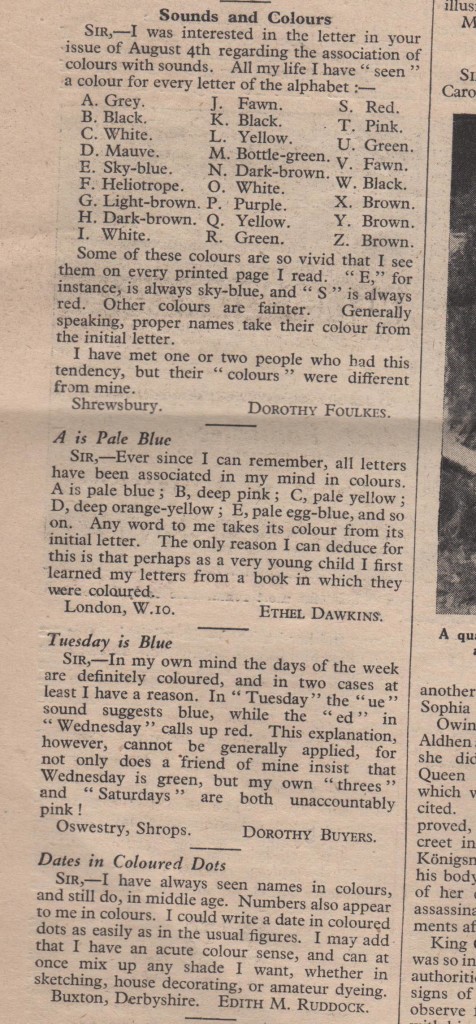Just two weeks before World War Two broke out John O’ London’s Weekly for August 18th, 1939, published four letters from readers blessed with a form of synaesthesia in which certain words, numbers and letters of the alphabet are associated with particular colours. This uncommon condition has been known about for some time, but until the autistic savant Daniel Tammet (b 1979) published his memoir, Born on a Blue Day (2006), few outside the realms of psychology knew much about it.
Tammet, born Daniel Paul Corney in a Barking council house, was an unremarkable child, although he was later diagnosed with Asperger’s Syndrome. At the age of twelve he suffered an epileptic fit that left him semi-conscious on the kitchen floor. When he came to he gradually discovered that the fit had left him with a remarkable series of skills. Synaesthesia was one of them; others included an astonishing ability to calculate, an amazing gift to acquire foreign languages at speed, and a memory that in time enabled him to memorise packs of cards and to recite the value of pi to 22,514 digits. This array of skills was far more spectacular than those that brought fame to another autistic savant, the American Kim Peek, on whom the ‘Rain Man’ of movie fame was based. Peek, it must be added, was intellectually challenged, whereas Tammet, as befits someone with Asperger’s Syndrome, is clearly, as his books demonstrate, a man of superior intellect.
Synaesthesia isn’t as rare as is commonly thought. The Harvard Medical School has calculated that about 1% of people have some form of the condition. However, it would be interesting to know if Dorothy Foulkes, Ethel Dawkins, Dorothy Buyers and Edith Ruddock had similar memory skills to those of Peek and Tammet. Unfortunately a quick search using Google failed to reveal anything remarkable about them, though it is interesting to note that all these four correspondents were women. Coincidence, or not. [R.M.Healey]
